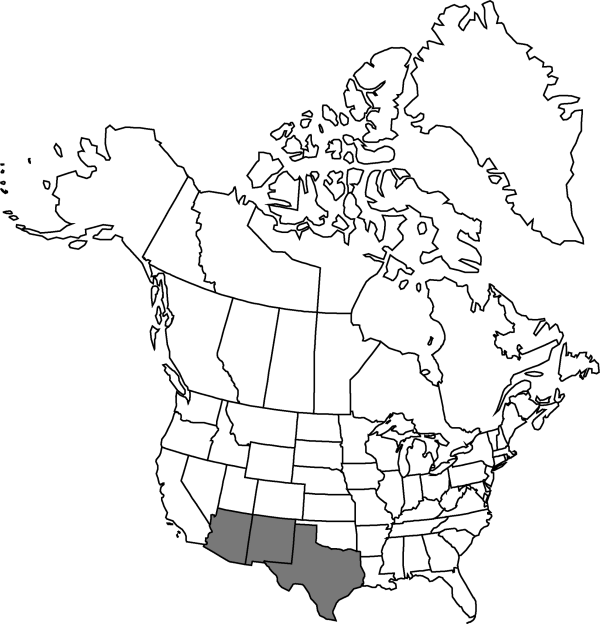Phemeranthus brevicaulis
Novon 11: 319. 2001.
Plants to 1 dm; roots fusiform, fleshily woody. Stems spreading-ascending, branching, sometimes suffrutescent. Leaves sessile; blade to 2.5 cm, distal terete or subterete, proximal flatter, broader, somewhat shorter. Inflorescences cymulose or 1-flowered, slightly to distinctly overtopping leaves; peduncle not scapelike, to 1.5 cm. Flowers: sepals persistent, ovate to elliptic-lanceolate, to 8 mm; petals light rose to purplish red, obovate, to 16 mm; stamens usually 20; stigma 1, subcapitate. Capsules ellipsoid, 4–6 mm. Seeds without arcuate ridges, 1 mm. 2n = 24.
Phenology: Flowering Apr–Sep.
Habitat: Dry woodlands on rocky slopes, ridges, and crests, in limestone and igneous soils
Elevation: 1600-3000 m
Distribution

Ariz., N.Mex., Tex., n Mexico (Chihuahua, Coahuila).
Discussion
Within the flora area Phemeranthus brevicaulis has been known most generally as Talinum pulchellum, which was based on a collection from Queen, New Mexico. However, P. brevicaule, which was described earlier (as T. brevicaule) from the Santa Eulalia Mountains in Chihuahua, Mexico, differs in no significant respect, and that epithet has priority when the two entities are merged.
Selected References
None.